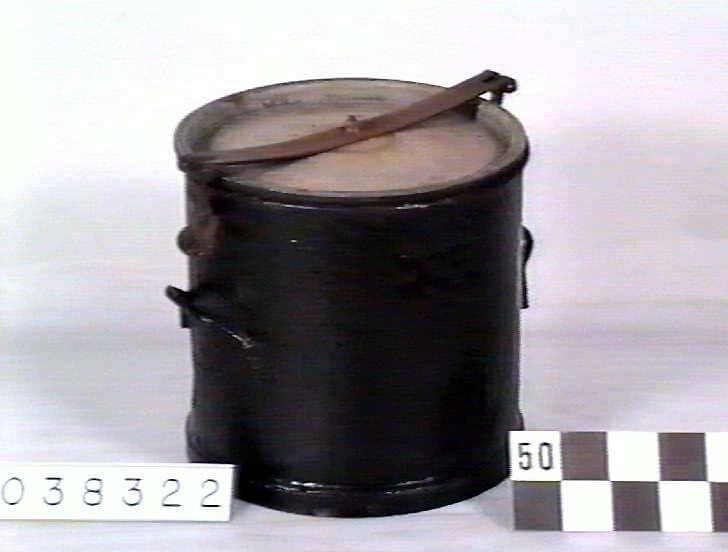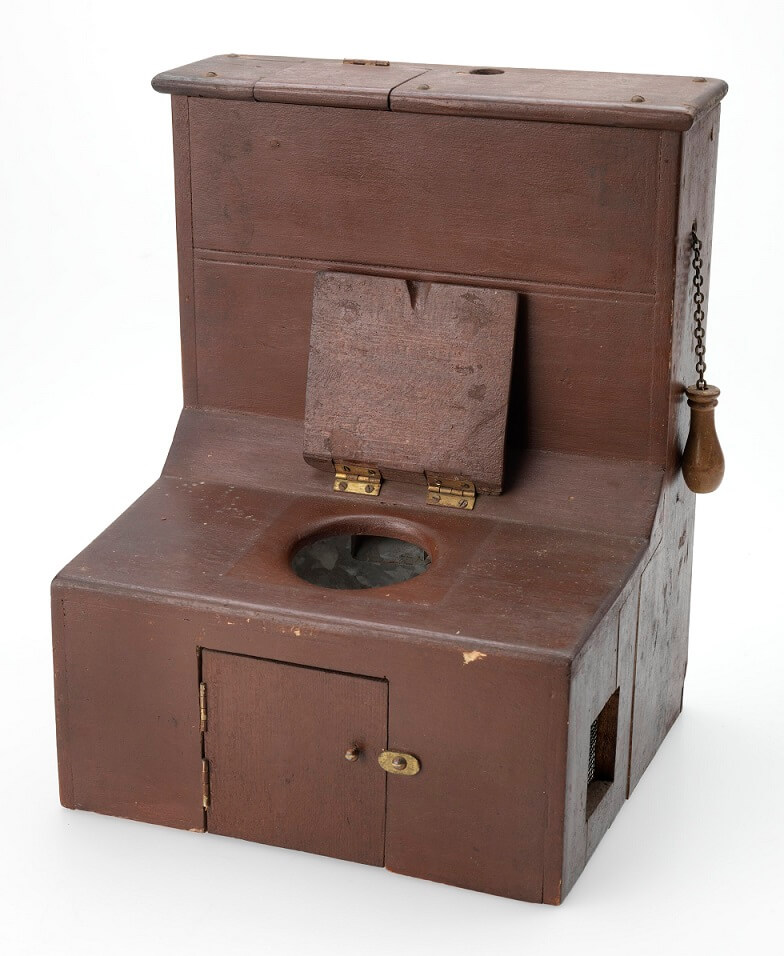Early Melbourne had no sewerage system. Residents disposed of their toilet waste, or ‘night soil’, in a cesspit — a simple hole in the ground lined with bricks. When it was full the waste was taken to a manure depot on Crown or municipal land. In the 1850s night soil from the city and inner suburbs went to a depot in Flemington Road at Royal Park, on the city’s northern fringe. More than 200 loads went to the Royal Park depot each week.
Cesspits were not ideal. Few were completely watertight, allowing sewage to seep and pollute wells and water supplies. Homes on low-lying land became particularly malodorous. They were also dangerous, with children drowning in cesspits and workers emptying them being overcome by noxious gas.
Cesspits were gradually replaced with a ‘pan’ system. Night soil accumulated in a pan, kept at the rear of each property. A ‘nightman’ collected the pan, usually once each week. He tipped its contents into his wagon and returned the pan to its place. He worked at night, between 11pm and 3am, because of the smell.
Disposal quickly became an issue. Manure depots were provided on the outskirts of town, but as Melbourne grew, so did the distance that the nightman and his horse had to travel. To shorten the trip, nightsoil was sometimes dumped into the Yarra River or tipped indiscriminately onto public roads.
Prosecutions were frequent. In April 1875 three nightmen, Kinsella, Kingsford and Rain, were brought before the Melbourne Police Court, charged with polluting the Yarra River at Richmond. It was reported:
The filthy brutes, to save themselves trouble and expense, had formed a shallow reservoir for nightsoil on the bank of the river, and had then cut a race from the reservoir to the river. Fifty-two loads had been emptied in this way.
Kinsella was found guilty and charged £30, but the damage had already been done. Jesse Barrow, the owner of a ‘refreshment place’ near the dumping site testified in court:
Frequently after drinking of the river myself and family feel ill, the symptoms being much the same as if we were poisoned… I have often before the last two years caught herrings and trout in the river, but now I can catch no fish. Within the last six months I have seen shoals of fish floating dead on the surface of the river.
In 1888 another nightman faced court, charged with ‘allowing nightsoil to be cast on the St. Kilda Road’. It was reported:
Constable Green stated that at 1 o’clock this morning he was on watch in the St. Kilda Road, when he observed the prisoner coming along with his night cart. He went towards the footpath, and then returned to the cart, and deliberately opened the door and allowed the foul contents of the cart to escape on the road. The constable gave chase, but the man drove off at a gallop when he found himself observed, and about three-quarters of a mile was covered before the man in blue got on terms with the driver of the nocturnal vehicle.
One nightman told a court in 1889 that he ‘spilled the matter in the road because it was impossible for one horse to drag the load up the hill.’
Melbourne was an unhealthy city in the late-nineteenth century. Typhoid was ever-present and infant mortality from gastro-enteritis and dysentery was high. In fact, historian Janet McCalman, notes that Melbourne’s infant mortality rate exceeded that of London until the 1890s. There were demands for sanitary reform and in 1891 a water-borne sewerage system was built. Melbourne households were connected, but the suburbs were not so lucky. Night soil pans continued to be used as an alternative to septic tanks, or for temporary toilets. Nightmen were still collecting pans from the outer suburbs in the 1990s.
Sanitary pan, also known as a ‘nightman’s pan’, used for the collection of toilet wastes.
Reproduced Courtesy Museums Victoria
‘Earth closet’, miniature salesman’s sample, T. Headen & Son, Melbourne, c.1890
Courtesy Museums Victoria
On display in the exhibition is this model of an ‘earth closet’, on loan from Museum Victoria. This was the most sophisticated form of sanitary pan. After each use, deodorised ‘dry earth’ was dispensed into the pan, helping to reduce odours. It would have been used in the more affluent households.
The model was made by the Melbourne firm Thomas Headen, presumably used to market the ‘earth closet’ to new customers.
For more than 30 years Ron Graham collected night soil in Sunshine, starting work at 3am. He may well have been Melbourne’s last ‘nightman’, retiring in 1995. While some nightmen carried the pans on their shoulders, Ron preferred to hoist the full pan onto the top of his head. He stuffed a wad of clean toilet paper into his cap to provide some padding: the pans weighed about 26kgs when full. The cap also gave protection from leaks or spills.
Further reading
Barbara Minchinton & Sarah Hayes, ‘Dating Melbourne's cesspits: digging through the archives’, Provenance: The Journal of Public Record Office Victoria, issue no. 16, 2018.


